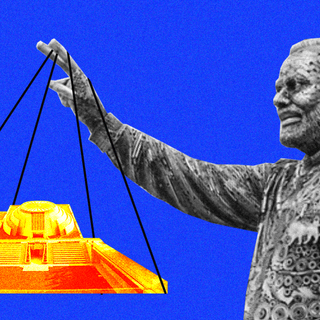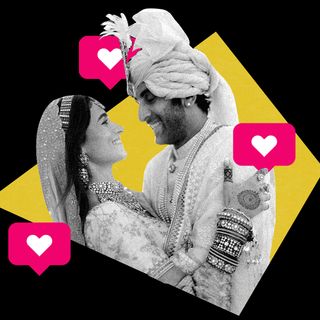
Overrated, Not: One‑Hit Wonders
While the popular image of the one-hit wonder is that of a struggling, out-of-work person in the shadow of their own glory, their moment in the sun isn’t something to be scoffed at, but celebrated.

In ‘Overrated, Not,’ we revisit things that were so good, they quickly turned bad, and make a case for why they deserve a comeback.
There are a few pop culture staples that continue to dazzle the imagination and the senses, but which, upon further inspection, feature somebody who was rarely — if ever — to be seen again.
If you’ve ever found yourself humming Gotye’s “Somebody That I Used to Know” and wondered “hey, what happened to this guy?” you wouldn’t be alone. As it happens, Gotye is apparently involved in charity work, documentary films, and launching his own record labels. Elijah Wood — not to be confused with Daniel Radcliffe — is similarly… nowhere to be seen, post his triumphant quest to Mount Doom in Lord of the Rings. Macaulay Culkin — perhaps the epitome of child stars — is currently in what appears to be a loving, wholesome family with partner Brenda Song (someone else not seen since her iconic turn as London Tipton The Suite Life of Zack and Cody) and their son. Rupert Grint, although very much still active, is no longer the household name he once was since the Harry Potter franchise completed. Rick Astley, Darsheel Safary, Tippi Hedren, Linda Blair — the list of iconic yet ephemeral faces goes on.
While many of these names attract pity, scorn, or even cruel indifference, there is something to be said for one-hit wonders and their cultural impact — and much to learn from them too.
Most actors who might be considered one-hit wonders are often part of a series, playing instantly recognizable roles — in the process, they provide a face to a name that forever continues to be associated with them. They then become powerful tools for nostalgia; a person who is associated with one thing and one thing alone becomes a way for the cultural entity to be immortalized more meaningfully, in some ways. A beloved character, for instance, has a unique face and personality that isn’t adaptable or malleable.
Moreover, to have a recognizable face and name after just one performance — either in a singular role over years, or for one hit song — is no mean feat, and nothing to be pitied. The popular image of the one-hit wonder is that of a struggling, out-of-work person in the shadow of their own glory; but their moment in the sun isn’t something to be scoffed at. If anything, it is to be celebrated.
Related on The Swaddle:
There is arguably staying power and resilience in such an image: it means that no matter how many decades an actor puts between themselves and their iconic legacy, their legacy still remains as steadfast as ever. Mark Hamill as the Joker is one such example; every Joker after Hamill has, in some way, had to take a leaf out of Hamill’s book. Although he did also play Luke Skywalker in the Star Wars films, it is his Joker that leaves the most enduring mark both in the DC universe and, more broadly, in the world of iconic screen villains too.
While naysayers tend to dismiss one-hit wonders as “has beens” or “irrelevant,” there is something undeniably appealing about being the sole name or face for a cultural heavyweight. Tippi Hedren in Birds is the very image of ornithologically-induced terror; she has also been the subject of much cultural analysis and conversation, defining for a whole period of time the anxieties encapsulated by her turn as Melanie Daniels.
Amid a culture where we are accustomed to measuring success in consistency, we more often than not end up dismissing performances that have a limited shelf life. But this can often be more valuable than a “long” one — but artists who don’t always stick around for the credits hold their own unique cultural value: they represent the power and purpose in finitude.
There is also a darker side, however, to one-hit wonders that makes them figures to empathize with — rather than denigrate. Tippi Hedren is known only for Birds because of how, reportedly, Alfred Hitchcock deliberately sabotaged her career in retaliation for her refusal to sleep with him. Macaulay Culkin headed down a destructive path of addiction after achieving stratospheric stardom early in his childhood. Linda Blair, following her haunting role in The Exorcist reportedly went down a similar path, before finding solace in animal welfare. It may have something to do with the travails of fame in early youth, or with insidious sexism plaguing the industry that puts many stars at the whims of directors. Many others continue to struggle with the burden of early and prolonged fame that comes to an abrupt end — wanting to be known for something else but being typecast or stuck in a particular image.
Either way, one-hit wonders represent the tragedy of potential lost to extenuating circumstances — which should give us pause, if nothing else. But they also represent what it means to achieve success that isn’t fleeting and that doesn’t need active sustenance. A “where are they now” search engine hit about most one-hit wonders shows them engaging in diverse, often compassionate enterprises that have little to do with the domain they were originally famous for. And yet, they are seemingly at peace with themselves — which casts their one hit in a truly soft and wondrous light.
Rohitha Naraharisetty is a Senior Associate Editor at The Swaddle. She writes about the intersection of gender, caste, social movements, and pop culture. She can be found on Instagram at @rohitha_97 or on Twitter at @romimacaronii.
Related


The Buzz Cut: Humble Man Honors Predecessors With Museum, Includes Himself Too
